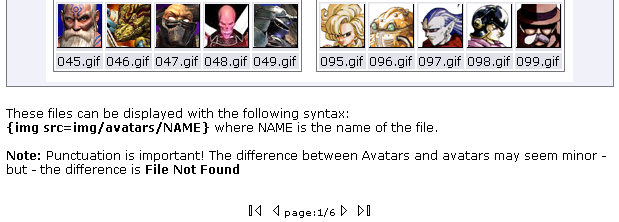Wiki-Syntax Separators
On this page, you'll learn how to use separators on Wiki pages and other area that support Wiki formatting (including articles, forums, and blogs). Separators are a general term that includes: Rulers, Boxes, Headers, and the Tables of Contents.
Horizontal Rule
A horizontal rule can be created with four hyphen (-) characters. Horizontal rules are HTML block-level elements, which means they are the full width of whatever they are contained by on the page.
Example:
----
Produces the line below:
-
(Note: The Fivealive theme seems to be making the horizontal rule the same color as the background, and so, invisible. This will be fixed shortly.)
Horizontal rules can be styled in various ways if the CSS for the theme overrides the user's browser default styling.
Title Bar
The Title Bar is similar to a Horizontal Rule in that it produces a line that stretches across the page, although a Title Bar contains text on it. A Title Bar needs to be on its own line and is created with the Hyphen (-) and Equal (=) characters.
Example:
-= This is a Title Bar =-
Will produce the following Title Bar:
The text on a Title Bar can be centered and/or colored, and should be able to contain other HTML elements such as an image since it is actually a div. However, the function of a Title Bar as essentially a horizontal divider should be kept in mind.
Example:
~~red:::A Red Centered Title Bar:: ~~
Will produce the following Title Bar:
Boxes
Boxes are added with the Caret (^) character. This character can be located anywhere on a line but it should be the first character. The first Caret indicates where the Box will starts and a second Caret (on this or another line) indicates where the Box is to end.
Example:
^ This is a Box ^
Will produce:
See also pluginBox.
Page Breaks
Page breaks allow you to control the length of a page for easy reading. A new page can be added anywhere but should start at the beginning of a line. A page break uses 3 Periods (.), the keyword page and another 3 periods (.)
Example:
Would produce a page break.
The following image shows the bottom of a typical page that has multiple pages.

The arrow buttons will take you (from left to right) to the First Page, the Previous Page, the Next Page, or the Last Page.
1.1. Headings
These are added with one or more Exclamation Marks (!) at the beginning of a line. The number of Exclamation Marks used controls the size of the text and indentation level that a heading will have in a table of contents. The heading of the following paragraph uses three exclamation marks.
Headings with Expandable Area
The content below a Heading can also be expandable. An Expandable Area is created by adding a Plus (+) or Minus (-) character after the Exclamation Marks. The Plus (+) and Minus (-) characters define what the default value is for the expandable area as shown below.
Example:
!!!+ and !!!-
Were used to create the next 2 Headings.
In either case, the Expandable Area extends to the next heading. When used, a + or - button is created that, when clicked, will expand or contract the area.
* To make the (+)/(-) icons appear in front of the headings instead of going to the next line, Go to Admin Home>Wiki Setting, enable the "Display show/hide icon displayed before headings" feature.
Closed Expandable Areas (Click the [+] to Open)
[+]Open Expandable Areas (Click the [-] to Close)
[-]This area was open by default while the one above it was closed.
Numbered Headings
Example:
!!!#
You can see an example at Tiki24, See wiki syntax